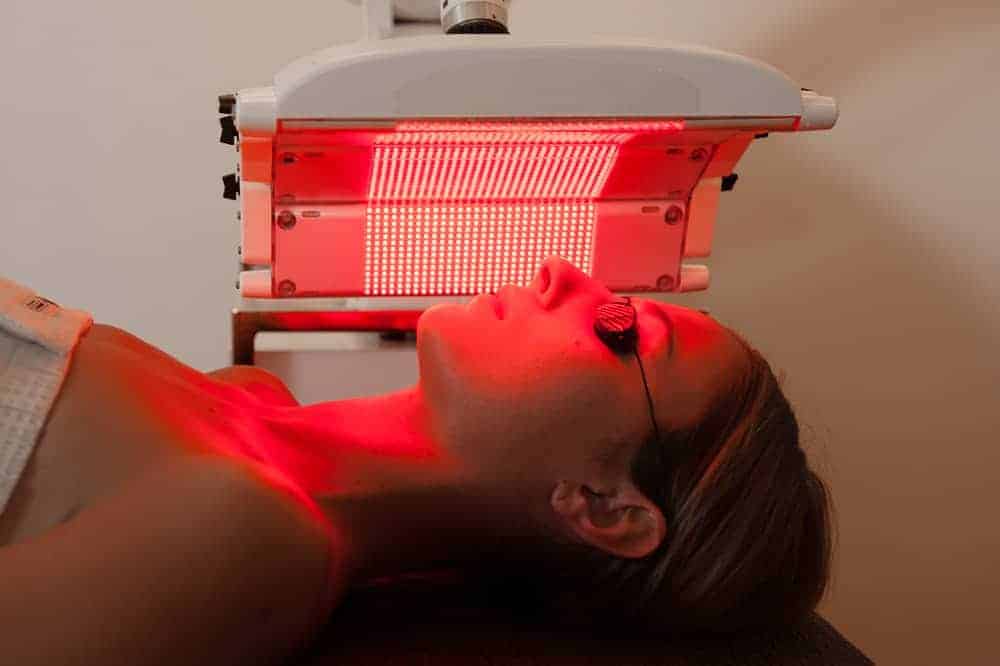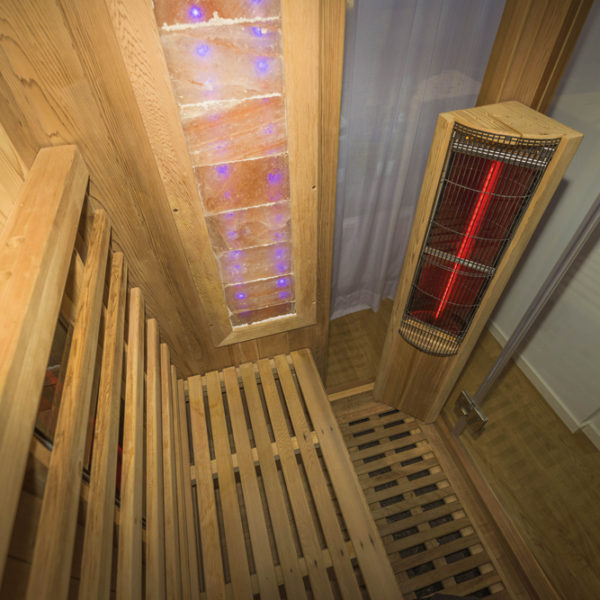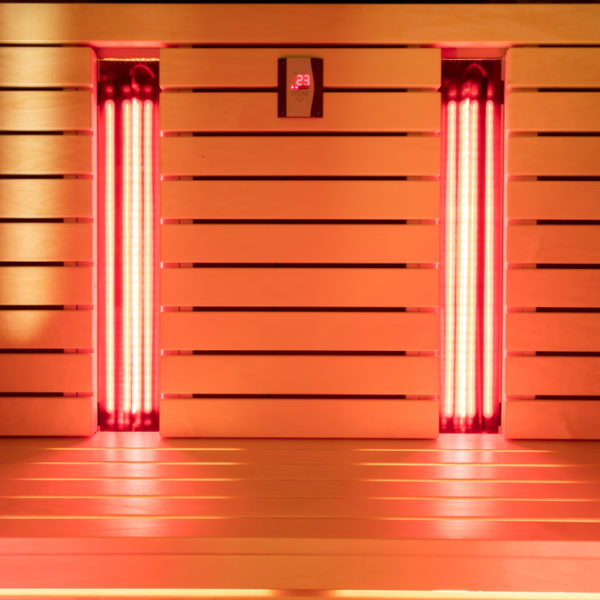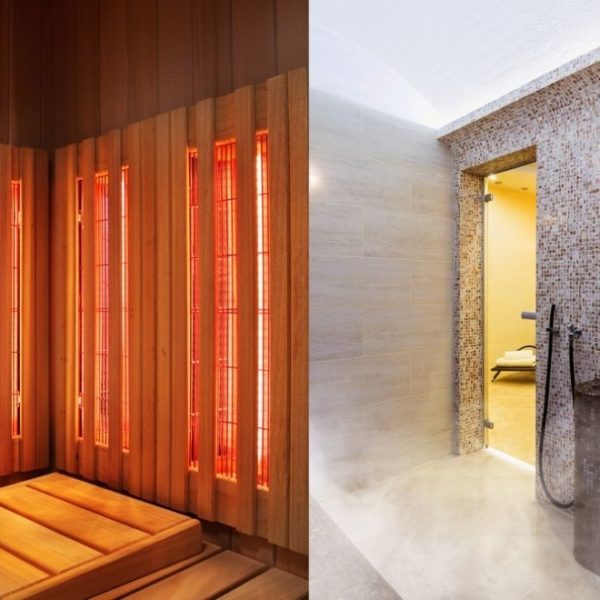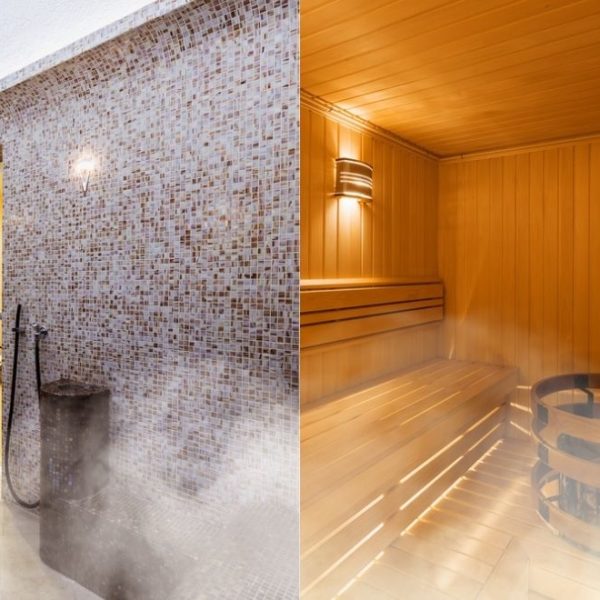Are you looking for a risk-free solution to treating that unsightly wrinkle, pain-management alternatives, or are you looking to treat a more serious medical issue like arthritis, bone atrophy, or inflammation?
This article will help you find a possible solution by understanding the benefits and drawbacks of utilizing red light therapy or an infrared sauna to revitalize, treat, and reward your body with its many uses and applications.
What you Didn’t Know About Red Light Therapy
Red Light Therapy is a relatively recent treatment found in both spa-like and medical settings around the world. From skin issues such as wrinkles and stretch marks to more complicated conditions such as psoriasis, red-light therapy aims to increase energy at the cellular level to promote more efficient damage repair.
History
Discovered over 100 years ago, “Danish physicist Niels Ryberg Finsen was awarded the Nobel Prize for his invention of light therapy for skin tuberculosis.”However, red light therapy did not take significant strides amongst the widespread population until NASA (National Aeronautics and Space Administration) released its findings in 2002 that outlined the positive effects that this therapy had on its astronauts.
Spaceflight is an impressive human feat; however, astronauts risk exposure to several medical conditions. Upon evaluation of its potential to accelerate the normal healing process, medical research annotated their findings (download this conference paper for further reading), indicating that in conjunction with a sauna blanket, this therapy was “found to be effective in the prevention of bone and muscle atrophy.”
Uses
Aestheticians and medical doctors alike utilize red light therapy for a multitude of uses. But first, let us try to understand better the process that leads to its proposed effects.
Do you remember your introduction to cell biology in elementary school? If so, then you probably recognize the word mitochondria. Mitochondria are membrane-bound organelle’s that operate as the “powerhouse” of the cell.
During photosynthesis, sunlight provides plants with the energy required to synthesize nutrients. For most, daily exposure to sunlight provides our cells with sustainable energy levels to promote regular functions.
However, many of us suffer from skin or various other medical issues. And for this reason, the medical field has benefitted from the discovery that low-level light therapy produces energy as ATP.
ATP is a tiny molecule within the mitochondria that serve as the carrier for synthesized energy. This energy pathway activates as energy-consuming activities occur within the body, thus making light energy a viable source for damage repair amongst the medical community.
Red light therapy is generally safe as it uses low levels of U.V. light to penetrate deeply into the skin for cellular absorption. However, suppose you are interested in the therapeutic benefits associated with red light therapy. In that case, I recommend you first consult with your doctor and then only receive treatment from a licensed and experienced practitioner.
The World Health Organization is not the first to mention the benefits of sun exposure to us as humans, although they do recommend “5 to 15 minutes of casual sun exposure of hands, face and arms two to three times a week.” In addition, they mention that U.V. radiation has successfully treated rickets, psoriasis, eczema, and jaundice. And, let us not forget the treatment of lupus vulgaris, which earned Dr. Finzen the highly coveted Nobel prize.
Let us discover the several uses that red light therapy has and if it could benefit you or someone you know.
- promotes healing of acne scars
- pain-management
- promotes faster wound healing
- hair growth in people with alopecia
- relieves pain from carpal tunnel syndrome & arthritis
- promotes more rapid healing of diabetic foot ulcers
- decreases inflammation from psoriasis
- treats lines, wrinkles, and sunspots
- reduces recurring cold sores from herpes virus
- softens scar tissue formation/appearance
- provides muscle & joint recovery after physical activity
- reduces itching from eczema
- can reduce chemotherapy side effects
- reduce the appearance of stretch marks
Types
If you are looking for a red light therapy practitioner, sources may include your local day spa or medical spa, physical therapist, dermatologist, naturopathic physician, doctor, or larger hospitals.
Although it is possible to purchase red light therapy devices online for personal use frequently, they have not undergone the same rigorous trial testing that a professional device has received.
In addition, many of these devices do not have any official governing approval. In many cases, personal products may be FDA cleared but not approved.
Although you can supplement your treatments with at-home therapy using a personal device, which may save you some money and accelerate results, I still recommend you seek an experienced practitioner that utilizes the highest quality tested and licensed equipment.
Due to retinal sensitivity, eye protection is recommended but not required. Furthermore, the CDC notes, “some oral and topical medicines, such as antibiotics, birth control pills, and benzoyl peroxide products, as well as some cosmetics, may increase skin and eye sensitivity to U.V. in all skin types.”
Keep these tips in mind as you seek out a professional practitioner. In addition, several terms may refer to red light therapy throughout the industry, including:
- Low-Level Light Therapy
- Light-Activated Biostimulation
- Phototherapy
- LED (Light Emitting Diode) Therapy
- Photobiomodulation
No matter the name, the science behind the technology is the same. While a variety of devices are available to accommodate different parts of your body, red light therapy “provides compromised cells with added energy, so the cells performance is enhanced.”
Pros
- uses low levels of heat that doesn’t expose your skin to damaging U.V. rays
- for people who have sensitive skin, pregnant women, or cancer patients may still use this therapy; however, prior medical consultation is a MUST
- known to treat several medical conditions, not to mention its relaxing and therapeutic advantages
- relatively low operating cost
- widely available
Cons
- if you do not follow the recommended guidelines or duration of treatment, the therapy may not yield the results desired
- side effects include eye strain, headaches, skin redness, and tightness
- tissue and cell damage may occur if conducted by a practitioner with little to no experience
- may irritate or damage skin tissue if used too much
- too much exposure can risk burns to your skin (many reports note that the burn victim falls asleep due to being relaxed)
How About an Infrared Sauna
Infrared saunas are a popular choice today for people seeking holistic healing. However, heat has been in use for millennia as an age-old remedy. If you are like me, someone in your family has recommended a hot salt bath as a remedy for numerous conditions ranging from clearing out nasal mucus from a common cold to soothing muscles after a stressful sports event.
The truth is that heat technology offers an even broader spectrum of benefits to your body than just those age-old cure-alls.
History
Saunas have been used effectively as a holistic health practice since at least 2000 B.C., although rudimentary heat therapies were used in Africa to rid people of infectious disease much earlier.
However, today most people think of Finland when they hear the word sauna.
FUN FACT: Industry leader, Jacuzzi, highlights that “there is on average one sauna per household (3 million saunas in Finland serving a population of 5 million).”
The benefits of heat therapy are revered globally and have been used cross-culturally from ancient Roman and Greek bathhouses to the purification centers of the Turkish Hammans.
In 1965, a Japanese doctor received the first patent for a far-infrared sauna whose lamp technology directly raises one’s body temperature to penetrate skin tissue effectively.
Since then, infrared saunas have undergone further research, testing, and development. Although Finnish people seem smitten over the traditional steam room concept, infrared spas may have an advantage.
First, traditional steam saunas operate by heating stones with water to create a hot and humid atmosphere. These saunas work by heating the room around you and can reach scorching temperatures of up to 200 degrees Fahrenheit.
On the other hand, infrared saunas typically operate between 110 and 140 degrees Fahrenheit, directing heat straight into the targeted source-your body.
Second, infrared saunas are generally smaller in size, allowing for a more private experience. Traditional saunas are much larger, and you can have one built ultimately to any size.
Finally, infrared saunas are extremely energy efficient. You can also select various accessories such as BlueTooth speakers if you decide to have one designed for inside your home.
Traditional saunas are generally more expensive and require specialized construction, set-up, and a more rigorous maintenance schedule.
Though the above comparison is not exhaustive, one thing is sure, that you will enjoy many therapeutic benefits if you choose to use an infrared sauna.
Uses
Let’s face it. When you hear the word sauna, the top two words that come to mind are probably heat and sweat. No doubt about it, saunas are indeed designed to be hot and generate sweat. But, as we will find out, not all heat and sweat are created equal.
Perhaps, most widely known for contributing to one’s overall well-being as it helps you relax, infrared saunas have many additional benefits. Although you should exercise caution if you belong to the standard group of at-risk individuals (pregnant women, heart disease patients, or those under specific medications), there aren’t any reported adverse effects.
Moreover, you should follow specific guidelines to prevent feelings of light-headedness, dehydration, low blood pressure, and over-heating. With infrared saunas, you have the option to regulate both the temperature and duration of your experience on a panel usually furnished near the entrance to your relaxation chamber.
With the use of a sauna, people can enjoy the benefits of exercise without actually performing it, thus being especially attractive to people that suffer from an inhibitory medical issue.
But that’s not it. The following list covers a range of benefits from the use of an infrared sauna:
- mindfulness and relaxation
- releases toxins and activates sweat glands
- relieves stress and fatigue by calming nerves
- may provide pain and joint relief
- decreases inflammation
- enhances weight loss
- increases metabolism
- carries off waste products
- improves skin quality by removing impurities
- improves blood circulation
- effective at lowering blood pressure
Types
You should know that there are two types of infrared saunas- the difference lies in the wavelength of the light heat emitted. However, today, you may choose a full-spectrum sauna, as offered by Sunlighten, which empowers you to adapt it to the specific benefit you seek.
Typically, near-infrared units promote topical healing and pain relief. In contrast, far-infrared technologies are widely known for “removing toxins, improving circulation, and relaxing the muscles,” as our African and Japanese friends will tell us.
Far-infrared, the longest wavelength, penetrates the deepest and is best adapted for weight loss, detoxification, and increased blood flow.
Mid-infrared, are longer than near-infrared wavelengths and are effective at improving your circulation and increasing healing times.
Near-infrared, by far the shortest wavelength is absorbed right below your skin surface, promoting skin cell regeneration and revitalization.
In addition, by incorporating an infrared sauna into your mind-body-soul wellness regimen, you may experience additional spiritual benefits such as “dissolved tension, improved digestion, a stronger immune system, energetic alignment, and mindfulness.”
In conclusion, all three infrared ranges help heal and rejuvenate skin, muscles, tissues, and joints.
Pros
- relatively safe with no known long-term side effects (if you follow guidelines responsibly)
- low operating cost
- widely available in gyms, spas, and wellness centers
- home set-ups are available for purchase
- once you have medical clearance, you need not seek a practitioner for operating the sauna; you have more control
Cons
- may cause hypotension
- some cases indicate experiencing transient leg pain
- dryness may lead to airway irritation
- you may experience heat discomfort
- low operation cost
Red Light Therapy vs. Infrared Sauna: Recommended Choice
You should find that both a red light therapy regimen or a visit to an infrared sauna happen to be two of the most popular methods for relaxation, amongst other holistic benefits on today’s market.
Furthermore, you can benefit from a list of advantages of using either of these technologies. For this reason, we should look at the two systems as complementary rather than competitors.
Again, there is no question about the benefits that ultraviolet light has on the human body. Whether you have a topical skin issue or a more profound medical condition, the specific use of either far-infrared or near-infrared technology will better address your needs.
Based on the scientifically backed research that supports the effectiveness of red light therapy, this method may take have the upper hand.
Conclusion
Whether you find red light therapy or infrared sauna sessions to be more compatible with your desired results, you should seek reputable and experienced devices and practitioners respectively and receive treatments under proper guidance.
Would you please comment with any questions or concerns you may have regarding red light therapy or the use of infrared saunas?
